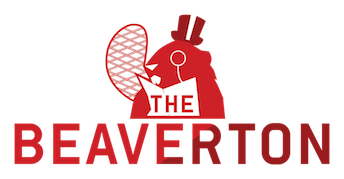


TORONTO — As normalcy slowly returns to the corporate world, a growing number of companies are taking to heart the lessons learned during the pandemic and allowing returning staff to work from home part-time, provided that home is the communal office space.
Julie DeRosa, a general manager at Toronto-based UX design firm LEAFF, highlights the shift to this bold new hybrid model.
“It’s well-known that employee happiness is strongly tied to commute time with the oft quoted statistic that ‘cutting one-hour from a commute is the happiness equivalent to making an extra $40,000 a year.’ This simply takes that observation to its logical conclusion. Incidentally it’s perfect because we plan to enact a salary-freeze for the next two years.”
“But rest assured, despite not paying that money to our workers they will reap its benefits in the form of exciting workplace improvements like communal showers, partially reclining chairs for sleeping, and an ankle-based productivity monitoring system.”
In preparation, ground is already being broken on the new on-site commissary store which will provide employees with groceries, sundries, and no reason to ever leave the office. For added convenience, workers’ wages will now be issued in LEAFFbucks, a new scrip currency that can be spent at any of the company’s stores, vending machines or water fountains.
“The comfort of our employees is our top concern, while at work-home they shouldn’t feel shackled to their desk. They should be able to stretch their legs, grab a reasonably priced snack, or catch-up on household chores. That last one will be especially important as we have laid off the entire custodial staff.”
While the new model is ambitious, LEAFF have experimented before with changing their work culture at large. A pilot program yielded promising results after a keycard malfunction locked several interns inside the building over the winter break. ”The survivors had some great ideas for streamlining the design process,” notes DeRosa.
“At the end of the day, our goal isn’t simply to design a more livable office space. We much prefer to think of it as permanently erasing the line between work-life and home-life, until all-life is just a greyish homogeneous blur punctuated only by brief dreamless sleep.”
If the hybrid work-model proves effective, LEAFF management is already drafting plans for a new maternity/paternity leave program which allows the parents to take as much time off-work as they need in exchange for a 51% controlling stake of the newborn.


